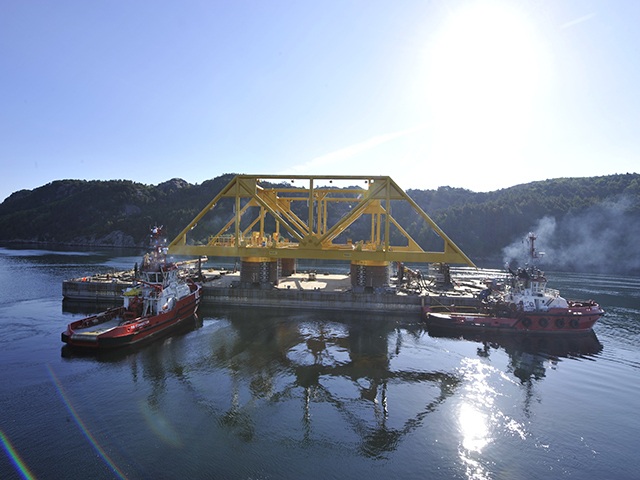
Aker Solutions has delivered the huge steel frame for the world’s first subsea gas compression facility to be installed at the Statoil-operated Asgard field.
The “game-changer” installation, set to come on stream in 2015, will enable the recovery of an additional 280million barrels oil equivalent from the Norwegian asset. It is also a key milestone in Statoil’s quest to create what it calls a “subsea factory” for the production of oil and gas.
At the time of writing, the frame was aboard a barge pending installation on the sea floor in some 300m of water. It will form the base for the world’s first subsea gas compression facility.
It is the largest subsea template manufactured by Aker Solutions and measures 74m in length by 45m breadth by 26m in height.
Three of the modules for the compression project have been built of which two will fit within the template, namely a subsea compressor station and a manifold. The third unit for powering the new subsea system will be installed aboard the Åsgard A platform.
The subsea modules are huge. The manifold alone has a length of 34m, breadth of 27m and height of 15m.
The template and modules will be installed using the Saipem 7000 heavy-lift crane barge.
This subsea template is among the biggest in the world, equivalent to the size of a soccer field.
The purpose of installing subsea compression at Asgard is to help sustain production from the assets’ Midgard and Mikkel reservoirs as their pressure drops due to depletion.
And a subsea gas compressor is even more efficient than a conventional platform-based compressor.
“Subsea gas compression is based on future-oriented technology,” said Statoil’s VP for technology and drilling, Margareth Øvrum.
“In addition to being an efficient tool for increased recovery, this is a huge technological leap in subsea development, and an important step on the way towards a complete subsea factory.”
The onshore base for the Asgard subsea gas compression, which has been allocated to Vestbase in Kristiansund in Western Norway, is also beginning to take shape. Statoil expects the facilities for cleaning, maintenance and storage of a complete spare of equipment will be ready in about a year.
The company has warned that extensive technology and project work still remain before the plant is ready for production in 2015.
Work on development of the actual heart of the technology which will separate gas and condensate before the gas is compressed and piped to the Åsgard B platform is still ongoing.
The next step is to verify the actual compressor technology,” added Øvrum. “This is ground-breaking technology and demanding work which is well under way.”
The 22 modules that will eventually comprise the compressor technology will be installed within the compressor station next year.
Recommended for you
